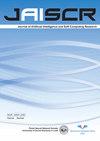Evaluating Dropout Placements in Bayesian Regression Resnet
IF 2.4
3区 计算机科学
Q2 COMPUTER SCIENCE, ARTIFICIAL INTELLIGENCE
Journal of Artificial Intelligence and Soft Computing Research
Pub Date : 2021-10-08
DOI:10.2478/jaiscr-2022-0005
引用次数: 1
Abstract
Abstract Deep Neural Networks (DNNs) have shown great success in many fields. Various network architectures have been developed for different applications. Regardless of the complexities of the networks, DNNs do not provide model uncertainty. Bayesian Neural Networks (BNNs), on the other hand, is able to make probabilistic inference. Among various types of BNNs, Dropout as a Bayesian Approximation converts a Neural Network (NN) to a BNN by adding a dropout layer after each weight layer in the NN. This technique provides a simple transformation from a NN to a BNN. However, for DNNs, adding a dropout layer to each weight layer would lead to a strong regularization due to the deep architecture. Previous researches [1, 2, 3] have shown that adding a dropout layer after each weight layer in a DNN is unnecessary. However, how to place dropout layers in a ResNet for regression tasks are less explored. In this work, we perform an empirical study on how different dropout placements would affect the performance of a Bayesian DNN. We use a regression model modified from ResNet as the DNN and place the dropout layers at different places in the regression ResNet. Our experimental results show that it is not necessary to add a dropout layer after every weight layer in the Regression ResNet to let it be able to make Bayesian Inference. Placing Dropout layers between the stacked blocks i.e. Dense+Identity+Identity blocks has the best performance in Predictive Interval Coverage Probability (PICP). Placing a dropout layer after each stacked block has the best performance in Root Mean Square Error (RMSE).在贝叶斯回归Resnet中评估辍学安置
摘要深度神经网络(Deep Neural Networks, dnn)在许多领域都取得了巨大的成功。针对不同的应用开发了不同的网络体系结构。不管网络的复杂性如何,深度神经网络不提供模型不确定性。另一方面,贝叶斯神经网络(BNNs)能够进行概率推理。在各种类型的BNN中,Dropout作为一种贝叶斯近似,通过在神经网络(NN)的每个权重层之后添加Dropout层,将神经网络(NN)转换为BNN。该技术提供了从NN到BNN的简单转换。然而,对于dnn来说,在每个权重层上添加一个dropout层将导致由于深度架构而产生强正则化。先前的研究[1,2,3]表明,在DNN的每个权重层之后添加dropout层是不必要的。然而,如何在ResNet中放置dropout层进行回归任务的探索较少。在这项工作中,我们对不同的退出位置如何影响贝叶斯深度神经网络的性能进行了实证研究。我们使用从ResNet修改的回归模型作为深度神经网络,并将dropout层放置在回归ResNet的不同位置。我们的实验结果表明,在Regression ResNet中,不需要在每个权重层之后添加dropout层来使其能够进行贝叶斯推理。将Dropout层放置在堆叠块(即Dense+Identity+Identity块)之间具有最佳的预测间隔覆盖概率(PICP)性能。在每个堆叠块之后放置一个dropout层,在均方根误差(RMSE)方面具有最佳性能。
本文章由计算机程序翻译,如有差异,请以英文原文为准。
求助全文
约1分钟内获得全文
求助全文
来源期刊

Journal of Artificial Intelligence and Soft Computing Research
COMPUTER SCIENCE, ARTIFICIAL INTELLIGENCE-
CiteScore
7.00
自引率
25.00%
发文量
10
审稿时长
24 weeks
期刊介绍:
Journal of Artificial Intelligence and Soft Computing Research (available also at Sciendo (De Gruyter)) is a dynamically developing international journal focused on the latest scientific results and methods constituting traditional artificial intelligence methods and soft computing techniques. Our goal is to bring together scientists representing both approaches and various research communities.
 求助内容:
求助内容: 应助结果提醒方式:
应助结果提醒方式:


